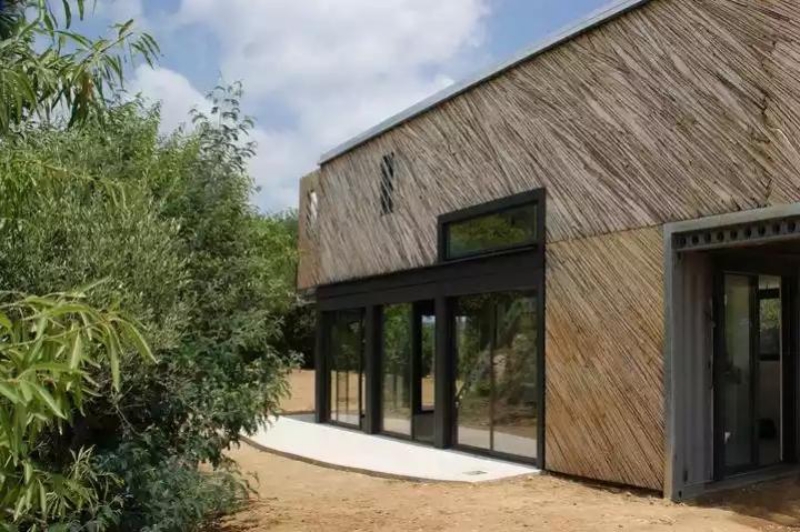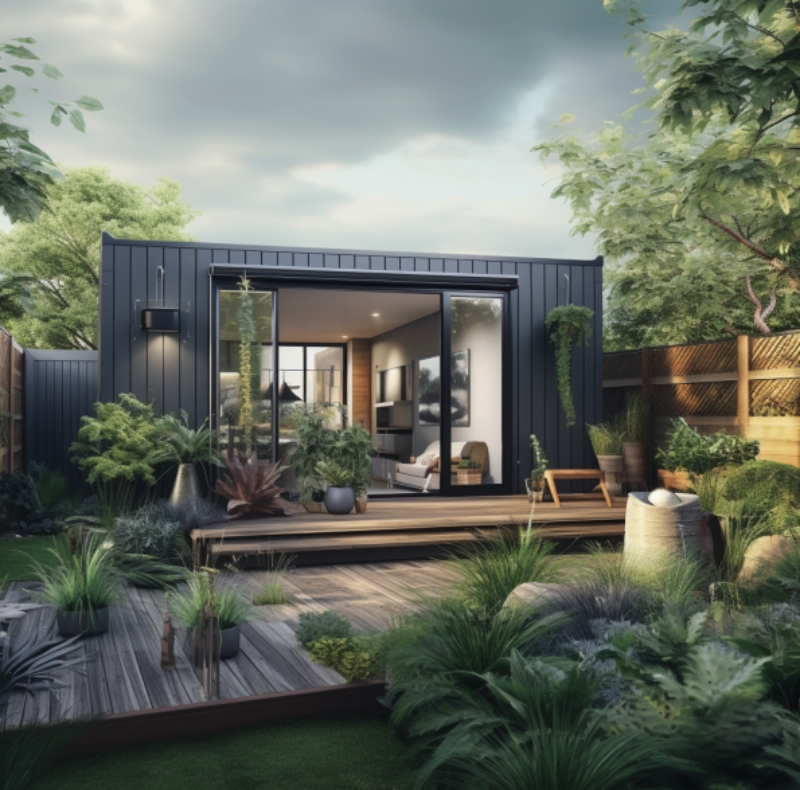When you invest in a shipping container home or office, there’s virtually no limit to your design creativity. You start with a basic steel box as your canvas, then customise it whichever way you like to build a perfect, unique space.
Don’t overlook the importance of a container’s design—the shape, size, and colour should reflect your aesthetic vision. Cladding is just what you need to finish an outstanding container project.
Wondering how to clad a shipping container? This guide covers everything you need to know, from cladding materials to applications and creative inspirations.
Shipping container cladding materials
The most popular shipping container cladding material is wood or timber. These can give you:
- An amazing range of textures and colours
- A natural look that blends well with the environment
- Additional value to the unit
- Long-lasting cladding that is easy to maintain
If you prefer a more modern look, clad your container with steel panels and choose your finish: polish or patina, matte or reflective, smooth or textured, perforated or ribbed, etc.
If your container is beside brick buildings, you can also choose brick slips, which are thin tiles that look exactly like your standard fired bricks.
They also come in many textures, colours and designs, so you can use brick slips that exactly match the rest of your home.
.jpg)
Shipping container cladding profiles
Simply put, a cladding profile is the surface created by the cladding when installed on your shipping container walls.
Your cladding doesn’t always have to yield a perfectly flat surface, so choose a cladding profile that adds an extra layer to your shipping container. The four main cladding profiles that work great on a shipping container are:
1. Tongue and Groove, Or V-Groove

Tongue and groove cladding interlocks panel by panel to keep moisture away from the metal wall underneath it. Think of the long boards of wooden floorboards. Tongue and groove cladding also seals in the spray foam insulation and protects it from the elements. When done right, v-groove cladding makes your shipping container more durable and weatherproof.
2. Feather-Edge

Feather-edged cladding is a horizontal installation, and the pieces overlap one over the other at an angle, similar to roofing tiles. Overlapping layers give your shipping container the classic, rustic look we love about old wooden homes. Choose the best feather-edge cladding size and colour to create an interesting texture or match your surrounding buildings.
3. Square Edge

Square edge cladding is what most sleek, modern container homes use—straight boards with a uniform plane. This type of cladding is very flattering with light-coloured timber, and it creates a clean façade on your shipping container home. It’s also a versatile cladding profile because you can use the spaces between the boards to develop rhythm and patterns.
4. Shiplap

Just like the v-groove cladding, shiplap cladding panels interlock with each other. However, this type of cladding has a scoop shape with a precise fitting joint for unbeatable moisture, rust and mould protection. Shiplap cladding offers a mix of rustic and modern for your shipping container home.
Pro tip: Go for thermally modified wood cladding
Since you can apply your cladding to a metal surface, that is, the walls of your shipping container, you need additional thermal treatment.
Remember that your shipping container is a big metal box that gets hot in the daytime and cold at night, not to mention exposure to wind and rain. Plain timber cladding will be more susceptible to warping and twisting, but thermally modified cladding will handle the elements and last longer.
How to apply shipping container cladding
Only a qualified contractor knows how to clad a shipping container according to the cladding type and unit size. In most cases, the contractor attaches batons horizontally along the length of the shipping container. It levels out the container’s corrugations.
The cladding comes from top to bottom or in sections until the container’s exterior gets completely covered. This process works well for wood and metal cladding. It also gives room for insulation between the cladding and the metal container wall.
Another option is to install the batons into the container’s sunken corrugations, then add the cladding flush to leave no gaps. This means that your shipping container insulation will have to be on the interior walls.
Brick slips installation is a bit different. Because of their size and design, brick slips can get bonded directly onto the container’s side or exterior insulation panels.
Note: If your shipping container is brand new, choose a cladding installation technique that causes minimal damage to the walls. If your container is a used one, check that the structure is strong enough to support the drilling and the additional weight of the cladding.
Benefits of cladding a shipping container
Cladding is not only an aesthetic choice, but it offers practical benefits for your shipping container too. Here are five reasons why cladding a shipping container is a great idea.
1. Greater flexibility
Flexibility here means the range of applications for shipping containers. Cladding allows these durable structures to be set up pretty much anywhere and blend into their surroundings. If you need a storage shed, garage, office, studio or even an extra guest room or playroom that won’t attract too much attention, choose shipping container cladding that matches the rest of the buildings.
2. Better than painting
A shipping container is unmistakable, no matter how many ways you paint it. If you’d like to disguise those signature ridges on the sides of your shipping container, throw some cladding on them. The process is an easy, convenient, and affordable way to transform your shipping container. Even better, you can paint the cladding for that extra wow factor to your property.
3. Better use of insulation space
If you have a small shipping container, say a 10ft cube, add insulation with your cladding on the exterior for a home office space. This is because insulation on the inside will eat into your usable space. The best option is to add plywood panels on the interior walls and then add insulation in the distance between the cladding and the exterior corrugated wall.
4. Save on the shipping container price
Shipping container cladding can cover many sins, so you can get away with buying a used shipping container for a fraction of your budget. Of course, assess your used container for structural soundness—cladding installation often means drilling into the sides to install brackets and batons, plus additional weight from the cladding material itself.
5. Better than prefabrication
Prefab is another take on shipping container aesthetics: instead of buying a brand new high-end prefabricated shipping container, you can achieve the same (if not better!) look with cladding. Prefabricated homes use affordable, repeatable designs to save on costs, so you may not get that fully customised, one-of-a-kind design like you would with cladding.
Examples of cladded shipping containers
MAC Container Housing
This MAC Container House uses a combination of 80mm wall cladding and spray foam insulation to demonstrate how containers can be either smooth or corrugated.
MAPA Brazil
This prefabricated shipping container home designed by MAPA Architects shows how slim wooden slats can blend into landscapes like hilltops and forests. They also utilise charred timber to create a more exotic look.
Tiny Container Home in Taiwan
This tiny container home (owner and designer undisclosed) has a part-cladded, part-painted exterior combination to make a beautiful shipping container home. You don’t have to install cladding all-around your shipping container. As mentioned right at the start, the sky is the limit when designing your shipping container unit.
Final thoughts

Many people aren’t keen on shipping container homes because of the corrugated metal look. Some may worry that their shipping container will look weird or become an eyesore compared to their neighbours’ properties. But as you can see, the quickest route to instant curb appeal is to add shipping container cladding.
Now that you know how to clad a shipping container, explore options with Gateway Containers today. We’re a full-service shipping container company. We’ll help you choose the perfect shipping container for your needs, along with any modifications you require. Contact us today for a free quote.




